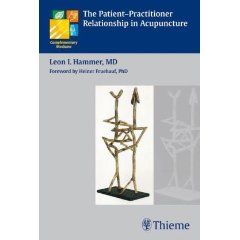We use cookies to make your experience better. To comply with the new e-Privacy directive, we need to ask for your consent to set the cookies. Learn more.
The Patient-Practitioner Relationship in Acupuncture
Written for acupuncturists and practitioners in the fields of complementary medicine searching for effective ways of connecting better with their patients in all their diversity, and the skills necessary to guide patients through emotional, psychological, and spiritual difficulties as part of the healing process.
This pocket-sized book emphasises the importance of the therapeutic relationship in acupuncture and offers practitioners some useful guidance about how to work with it effectively. Few these days would deny the importance of the therapeutic relationship in the healing arts, including acupuncture. I suspect, however, that this is a book that is likely divide the opinion of its readers. I can imagine some practitioners carrying it with them and turning to it for help and inspiration between patients; others are likely to regard it as resorting to platitudes and failing to take the opportunity to make a more significant contribution to the field.
Leon Hammer is an acupuncturist with many years of clinical experience who originally trained as a psychiatrist and psychoanalyst. The book is a distillation of those years of experience. It contains numerous brief clinical examples and emphasises the importance of qualities such as integrity, respect, acceptance and authenticity in nurturing the therapeutic relationship. In this way it promotes positive values and spirituality in the practitioner and there is certainly nothing wrong with this. The problem, however, is that it is often where these values break down and things go wrong that most can be learned. It is this ‘down and dirty’ side of the therapeutic relationship that could perhaps have been explored more courageously. Is it too much to expect of Hammer’s training as a psychoanalyst to accomplish more of that here?
To be fair, the book includes several examples of patients who behave negatively towards the practitioner in various ways. Hammer demonstrates how an understanding of the historical roots of these patterns of relating can enable the acupuncturist to retain compassion under duress. In this sense the book will be a useful guide to those who are inclined to retaliate in such circumstances. On the other hand there are some patients who are actually irritated by endless displays of compassion under duress and respond to it with yet further provocation. A detailed exploration of these more difficult cases might well have opened up some further interesting areas for discussion. What are we to do with our justifiable anger under such circumstances? Perhaps acupuncturists could learn something from psychoanalysts’ experience of using such ‘negative countertransference’ therapeutically. Instead, in a section dealing with transference and countertransference, Hammer in effect advises the acupuncturist to refer-on those patients who induce such negative countertransferences. This might either be regarded as a sensible recognition of the limits of one’s competence, or as a missed opportunity - depending on your point of view.
The book is divided into two sections. The first is more theoretical, looking generally at various issues that might arise in the therapeutic relationship. The second is in the form of a series of answers to questions that practitioners and students have asked Hammer over the years. On the positive side the writing is relatively jargon-free and easy to understand; Hammer’s lifetime of experience and gentleness shines through, especially in the numerous case examples. On the negative side the book tends to be rather repetitive and simplistic at times, returning to the same old mantras of respect, integrity and authenticity time and time again.
In summary this is a book that is likely to delight some readers and disappoint others. If the reader is hoping for a definitive textbook on the therapeutic relationship in acupuncture, or a ground-breaking treatise that incorporates the insights of psychoanalysis into the practice of complementary therapy, it is likely to do the latter. But for those who are less demanding, it may well do the former.
Bob Withers
| Author | Leon Hammer |
|---|---|
| Publication Date | 1 Jan 1970 |
| Publisher | Thieme |
| Number of Pages | 126 |
| Book Format | Softback |
* Orders shipped outside of Europe are eligible for VAT relief and will not be charged VAT.



